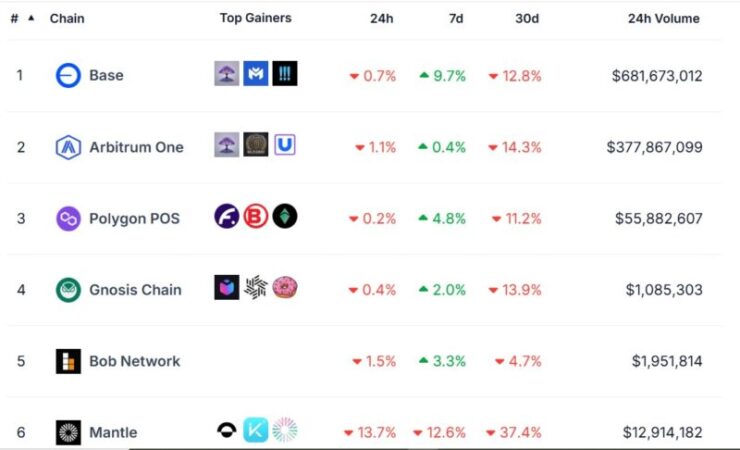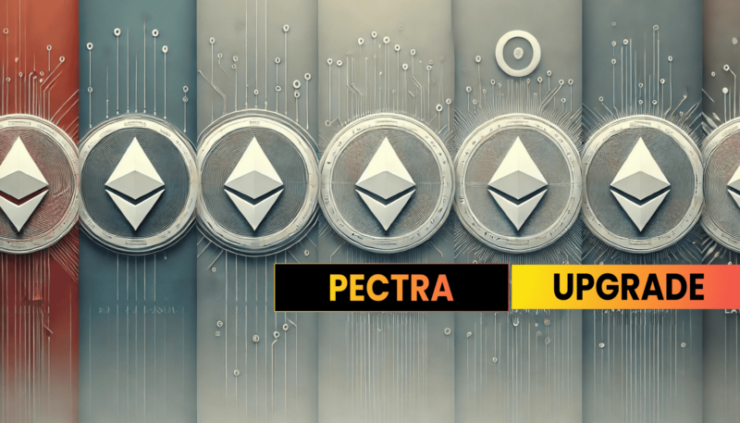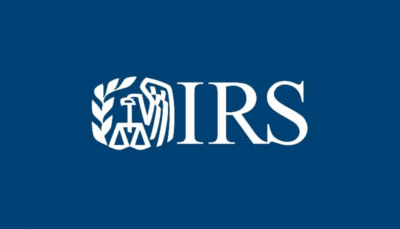As Ethereum moves closer to its highly anticipated Pectra upgrade, a clear trend is emerging among Layer-2 (L2) networks: rather than aiming for universal standards, many are clustering around specific dominant tech stacks.
New research from on-chain explorer Blockscout highlights how this consolidation shapes the next phase of blockchain scalability.
In an interview with Decrypt, Ulyana Skladchikova, head of product at Blockscout, and Kirill Fedoseev, head of research, detailed how L2 networks gravitate toward “technical clustering.”
Despite a general rise in transaction volumes, many chains increasingly align themselves around a few leading technology stacks rather than building disparate systems.
“We see chains kind of get together around some big players and establish interoperability within those groups of chains,” Skladchikova explained.
OP Stack Leading the Pack
A prime example of this consolidation is the widespread adoption of the OP Stack—a set of open-source standards primarily used on the Optimism network and its growing network of Superchains.
Real-time data from Rollup.wtf, cited by Blockscout, shows that most emerging L2 networks opt to build using this framework, allowing them to plug into Optimism’s expanding ecosystem easily.
The consolidation around OP Stack and similar frameworks is not accidental. With the complexity of cross-chain transactions and the need for smoother interoperability, L2 players increasingly opt for tried-and-tested infrastructure rather than reinventing the wheel.
L2 Transaction Growth Surges, But Bridging Activity Plummets
While Layer-2 networks are experiencing a boom in transaction volumes, new research shows a contrasting drop in cross-chain bridging activity. According to Blockscout’s internal data, monthly transactions on popular L2 networks like Base have skyrocketed, nearly tripling to 80 million monthly transactions. This points to growing user engagement and sustained adoption across these scaling solutions.
However, bridging activity between Ethereum’s Layer-1 and various L2 chains has declined steeply—falling approximately 80% since early 2024. This development points to the emerging challenge of “chain clustering,” where networks increasingly focus on building tight interoperability within specific ecosystems rather than relying on universal bridging standards.

Chain Clustering: Consolidation or Fragmentation?
Blockscout’s head of research, Kirill Fedoseev, explained the dynamics in the interview, noting that “there will be chain clusters around every large ecosystem player.” As networks consolidate around major frameworks like Optimism’s OP Stack, their interoperability becomes highly optimized within those clusters—but less so across the broader blockchain landscape.
This pattern isn’t just speculative. Monthly active users per L2 chain spiked by 250% during autumn 2024, peaking at over 14,000 before stabilizing at around 11,000, Blockscout noted. Interestingly, this reflects sustained adoption rather than short-lived activity fueled by airdrops or speculation.
As Blockscout highlighted in their research:
“Early hype doesn’t always translate into sustained use. When users migrate from a larger established platform to a new chain, it signals better future sustainability.”
With Ethereum’s Pectra upgrade on the horizon, these L2 consolidation trends are gaining even more relevance. The upgrade, which introduces enhancements like Verkle Trees and Peer Data Availability Sampling (PeerDAS), is designed to improve the Ethereum network’s data handling, scalability, and overall efficiency.
Quick Facts:
- Layer-2 networks are consolidating around dominant tech stacks like Optimism’s OP Stack, prioritizing interoperability within specific ecosystems.
- Blockscout research reveals that L2 chains are forming tight clusters rather than working toward universal standards.
- Monthly L2 transactions have surged, with networks like Base recording nearly 80 million transactions per month, yet L1-to-L2 bridging has declined by 80% since early 2024.
- The upcoming Ethereum Pectra upgrade is driving L2 networks to align their infrastructure for seamless integration, potentially leading to a more homogeneous interop environment.





